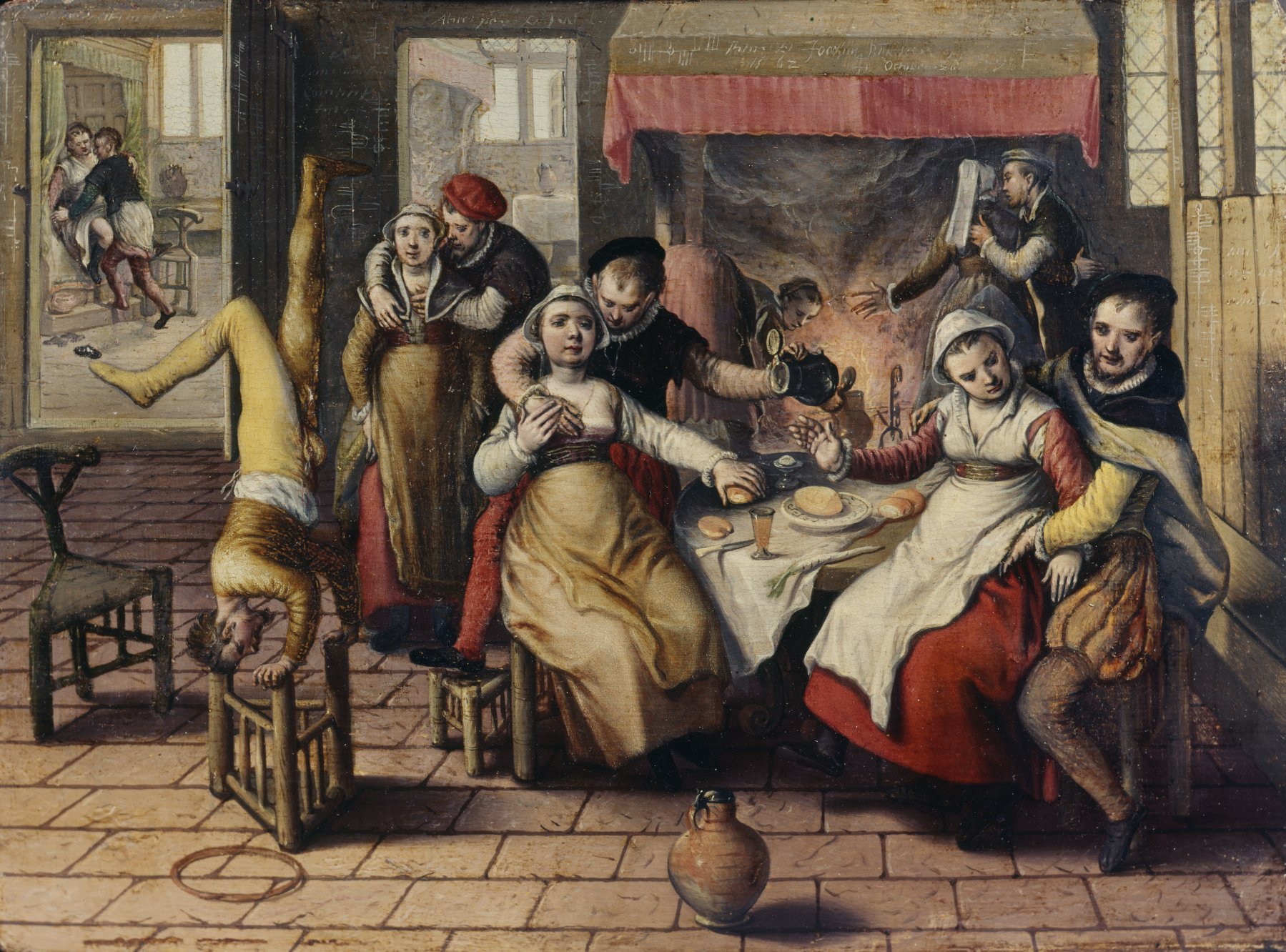Brothel
(Renaissance Europe )
Animated scenes of carousing in village inns and brothels were enjoyed by 16th-century collectors of paintings in the Netherlands as amusing evidence of the instincts of peasants. The motifs, including a drunk balancing unsteadily on his head, suggest that the scene is to be read in a moralizing way: excess leads to foolishness. It is intriguing then that Joachim Beukelaer inserted his signature and the date October 26, 1562, among the chalk marks on the mantelpiece, tallies of drinks consumed. Beuckelaer, working in Flanders, was one of the great contributors to this new interest in rural life along with Pieter Bruegel the elder. Gradually artists turned ttheir eyes to the misbehavior of the more moneyed classes as well and the universal capacity for foolishness becomes the target.Beuckelaer was one of the great contributors to this new interest.
This is one of Beuckelaer's small-scale paintings that is deeply indebted to the paintings of an earlier Antwerp painter, whose monogram has resisted reading and is known as the Braunschweig Monogrammist (by association with the location of his best known painting) as his 1537 Brothel in the Gemäldegalerie Berlin.
Provenance
Provenance (from the French provenir, 'to come from/forth') is the chronology of the ownership, custody, or location of a historical object. Learn more about provenance at the Walters.
Don Marcello Massarenti Collection, Rome [date and mode of acquisition unknown]; Henry Walters, Baltimore, 1902, by purchase; Walters Art Museum, 1931, by bequest.
Exhibitions
| 1998-2001 | Highlights from the Collection. The Walters Art Gallery, Baltimore. |
| 1981-1982 | New Light on Old Pictures: Dutch and Flemish Paintings from the Walters. The Walters Art Gallery, Baltimore. |
| 1980 | Salute to Belgium. The Walters Art Gallery, Baltimore. |
Geographies
Belgium, Antwerp (Place of Origin)
Measurements
H: 10 1/2 x W: 14 in. (26.6 x 35.5 cm)
Credit Line
Acquired by Henry Walters with the Massarenti Collection, 1902
Location in Museum
Accession Number
In libraries, galleries, museums, and archives, an accession number is a unique identifier assigned to each object in the collection.
In libraries, galleries, museums, and archives, an accession number is a unique identifier assigned to each object in the collection.
37.1784


